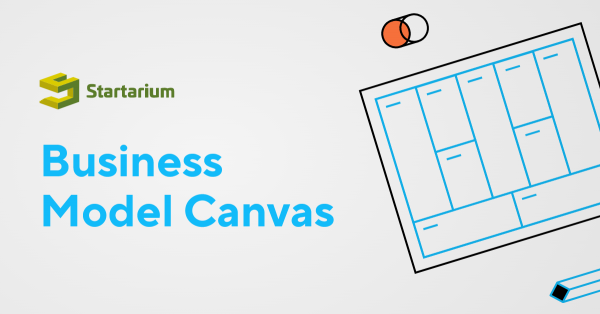How would the business model canvas look for other companies? Here are a few examples.

Patagonia
Patagonia was founded in 1973 and makes clothing and equipment for rock climbers. The founder, Yvon Chouinard was an avid climber who believed in clean climbing with little impact on the outdoors, so the company had a clear focus on environmental protection that reflected the personal ethics of its founder.
It was the first California company to use renewable energy sources to power its buildings and one of the first to print its catalogs on recycled paper. Patagonia switched to 100% organically grown cotton in 1994 and removed chlorine from its wool products.
Their differentiation and environmental focus has helped them grow sustainably.
Some sections of their BMC:
- Key activities: They aligned their activities to Environmental Objectives – the company limits its environmental impact by maximizing the use of organic and recycled materials, by repairing damaged clothes, and by complying with strong environmental protection standards for its entire supply chain.
- Value proposition: Patagonia made customers feel they are contributing to protecting the environment by extending their value proposition beyond the functional value proposition of high-quality outdoor clothing and equipment.
- Cost Structure: Patagonia’s high sustainability standards lead to higher costs, as they use more costly organic cotton, develop the infrastructure to recycle materials, and educate the public.
- Key partners: They justify the cost of making its supply chain as being more environmentally friendly by educating suppliers on sustainable practices.
- Pricing: Finally, Patagonia can charge a product as premium, because customers accept that environmentally friendly production comes at a cost. In this case, the company’s customers are more environment-conscious than price-conscious.
Apple
In 2007, Apple founder Steve Jobs famously introduced the iPhone at the Macworld 2007 convention as a revolutionary device that “would change everything.” Apple’s iPhone led the way for mobile technology to dominate and reform day-to-day existence.
Apple’s iPhone has consistently been more expensive than competing devices. However, Apple continually packs new features and technology into its iPhone in order to keep its products from seeming like a commodity.
Some sections of their BMC:
- Value Proposition + Customer Segments: Apple positions its smartphone (content + apps) at the high end of the spectrum, knowing that the price will put it out of reach for the majority of the market.
- The market they address is also considered more “premium” and they continuously reinvent and surprise the customers of this targeted market.
- Key partners: Apple does not manufacture the iPhone, but keeps its production costs low by controlling its supply chain. Due to the popularity of the device, Apple forces its suppliers to keep costs low as well as maintain privacy and secrecy over their devices.
- Cost Structure + Revenue Streams: They maximize margins and profits from high-end market share - the iPhone’s profit margins have remained between 60 to 70% over the past 10 years.
Barnes & Noble
Is the #1 bookstore chain in the US, operating 640 Barnes & Noble superstores, in all 50 states and Washington, DC.
The company's digital subsidiary, NOOK Media, develops, supports, and creates digital content and products for the digital reading and digital education markets.
Some sections of their BMC:
- Customer segments: They have a large consumer-focused customer base: a broad demographic of general consumers, with its physical retail stores offering a broad range of products (books, toys & games, DVDs). The physical stores serves customers across the US, while its NOOK operating segment serves a more international customer base through its digital sales channels.
- Value Propositions: Barnes & Noble defined a broad catalogue of products, made themselves accessible and present, created their own atmosphere and design of its stores and a well-thought pricing and discount strategy.
- Channels: Barnes and Noble operates a website at www.barnesandnoble.com, through which it provides information on its product catalogue, locations, and other products. The company also operates its own distribution channels, including two distribution centers. They also operate digital channels, including an online store through which customers can purchase and arrange the delivery of physical books, as well as a fully digital platform under its NOOK brand.
- Customer Relationships: The company provides many of its products to customers on a self-service basis, both physical and online (where the customers don’t interact directly with the employees, they manage their own accounts). Their NOOK platform enables customers to make purchases on a self-service basis, browsing titles through mobile devices, tablets, and e-readers and making purchases directly, with books delivered automatically and instantly to the customer.
- Key partners: Supplier and Vendor Partners, Strategic and Alliance Partners, Affiliate and Marketing Partners, College Partners.
- Cost Structure: The company organized their costs in relation to the acquisition of its stock, the operation of its sales outlets and distribution channels, the maintenance of its digital platforms and IT infrastructure, the management of its partnerships, and the retention of its personnel.
- Revenue Streams: They generate revenue through the sale of books and various other products through its multiple channels, including its physical retail outlets and its online and mobile platform, as well as the sale of drinks and snacks through its cafes.























